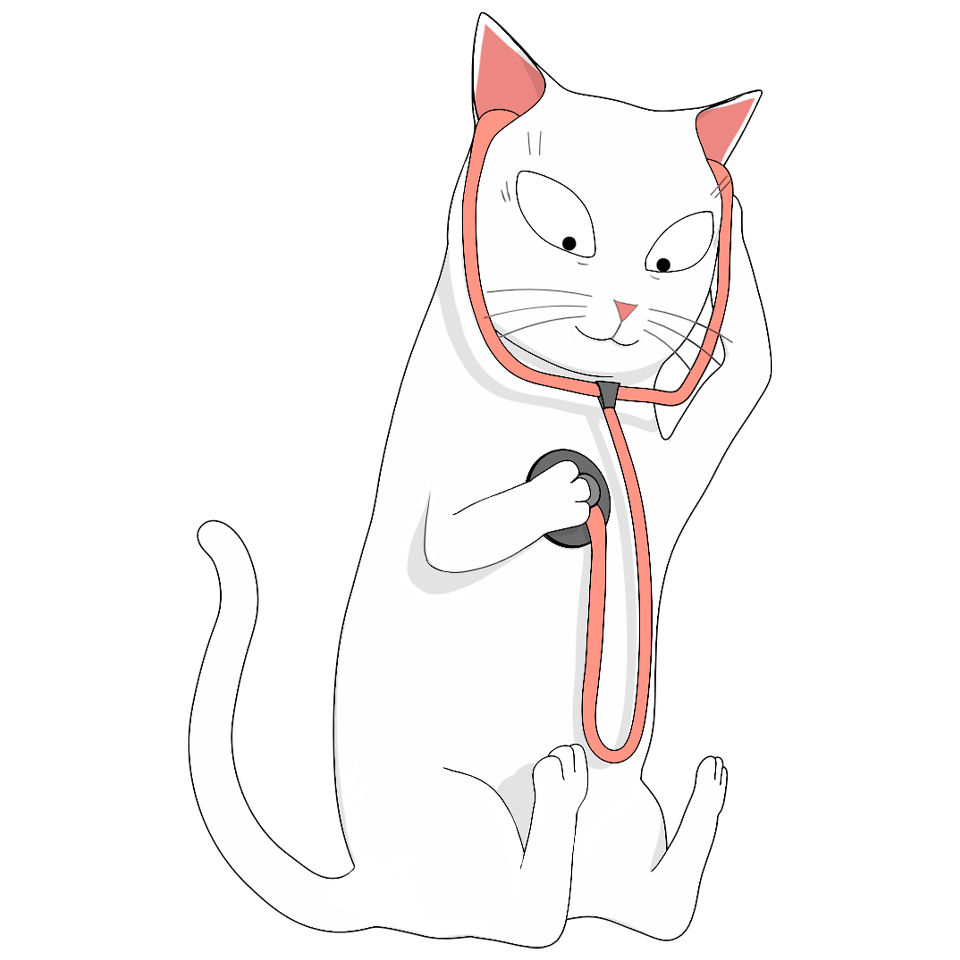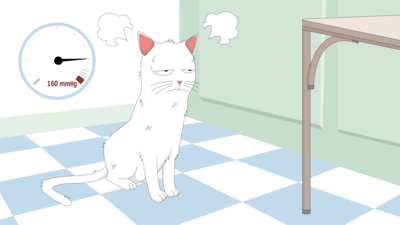
Hyperthyroidism in cats
Similar to us, cats can also suffer from problems with their thyroid glands. The thyroid glands are located in the neck, and are responsible for producing thyroid hormones which help control many important body functions including growth, metabolism and weight.
Hyperthyroidism is a disease where excess thyroid hormones are produced, resulting in an increased metabolic rate and often weight loss despite a good appetite. Hyperthyroidism is generally the most common endocrine (hormonal) disease seen in older cats, and is also common in older humans.
The good thing is, with proper treatment, hyperthyroidism in cats is a manageable and even curable disease and most affected cats that receive treatment can lead a healthy, happy life.
What causes hyperthyroidism in cats?
Hyperthyroidism is caused by an overactive thyroid gland. The thyroid - which is actually two glands, one on each side of the trachea (or windpipe) - can become enlarged and produce more thyroid hormones than normal.
In cats, this usually happens as a result of what is called 'nodular hyperplasia' of the thyroid gland, which is effectively a type of benign (non-cancerous) growth. In rare cases, the disease may be due to a malignant (cancerous) tumour of the thyroid.
The reason why some cats, but not others, develop hyperthyroidism is still not fully understood but older cats (those over 7 years of age) are at a much higher risk of developing hyperthyroidism.
What are the symptoms of hyperthyroidism in cats?
Thyroid hormones influence a range of vital body processes and metabolism, meaning hyperthyroidism can affect virtually every organ and function in a cat’s body.
Signs of hyperthyroidism in cats include:
- Losing weight, though their appetite is usually good or might even be increased
- Drinking more and urinating more often
- Increased activity and restlessness (or, more rarely, lethargy)
- Increased agitation and sometimes aggressive behaviours
- Poor coat and hair loss
- Vomiting and/or diarrhoea.

Also, as hyperthyroidism typically affects cats over seven years of age, it’s important to keep in mind that there may be other health problems happening at the same time, such as chronic kidney disease, which can cause other signs as well. Hyperthyroidism is also a common cause of increased blood pressure (hypertension).
Clinical signs may be subtle at first, but over time the disease progresses and signs become much more obvious.
What are the consequences of hyperthyroidism?
The persistent presence of high levels of thyroid hormones in affected cats can result in the development of some secondary diseases such as:
Hypertension
Hypertension, or high blood pressure, may not necessarily be obvious (it is often known as a 'silent killer' disease), but over time can cause life-threatening disease and significant suffering.
Sustained high blood pressure causes severe health problems through damage to tissues and organs, with the eyes, brain, heart and kidneys being most commonly affected.
Heart disease
Increased thyroid hormones concentrations result in the cat having a faster heart rate (the heart beating more frequently) and can lead to thickening of the muscle in the wall of the heart. Both of these changes can compromise normal heart function and can even lead to heart failure.
Kidney damage
It is very important to check kidney function in hyperthyroid cats as chronic kidney disease and hyperthyroidism often occur simultaneously. The link is partly because both diseases are common in older cats, but hyperthyroidism can itself also lead to kidney damage. It is important to monitor kidney function in hyperthyroid cats, even if there is no indication of problems at initial diagnosis. In some cats the presence of hyperthyroidism may mask any underlying kidney disease, and it may only become apparent as the hyperthyroidism is controlled with treatment.
How is hyperthyroidism diagnosed?
Ideally, hyperthyroidism should be diagnosed as early as possible to avoid complications associated with the disease.
Early diagnosis can be achieved before signs of hyperthyroidism show up by screening senior cats at check-up appointments, which is why regular check-ups are so important in older cats.
If you recognise any of the typical signs of hyperthyroidism, we recommend that you schedule an appointment with your vet.
At the vets, in some cases, the enlarged thyroid can be felt on physical examination.
However, diagnosis is made based on elevated thyroid hormone concentrations, which are assessed with a blood test.
How is hyperthyroidism treated?
Treatment of hyperthyroidism is aimed at reducing thyroid hormone levels to normal and, where possible, removing or eliminating the abnormal thyroid tissue. There are several options to achieve this including:
- Medication with a drug which blocks thyroid hormone production and reduces blood concentration of thyroid hormones to normal levels. Lifelong treatment is needed.
- Treatment with radioactive iodine (given by injection or by mouth) can destroy the overactive (abnormal) part of the thyroid gland without harming other organs - this is a successful and good treatment but because it involves radioactive materials is only available at certain centres.
- Surgical removal of the overactive thyroid tissue.
- Dietary management with a restricted iodine diet. Iodine is needed by the body to produce thyroid hormones and a low iodine diet can, in some cases, successfully lower thyroid hormone concentrations. A special diet is required though and strict adherenece to the diet without any supplements or alternative food sources is needed.
Your vet will recommend which one is best for your cat.
What happens next?
Regardless of the type of therapy chosen to manage your cat’s hyperthyroidism, monitoring their thyroid hormone levels (with blood tests), together with monitoring other health parameters such as blood pressure, is very important. The frequency of monitoring will vary between individual cats and how they respond to treatment.


